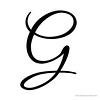You need to sign in or sign up before continuing.
Take a photo of a barcode or cover
Flash: The Making of Weegee the Famous by Christopher Bonanos is a free NetGalley ebook that I read in early June.
Usher/Arthur Fellig aka Weegee, a name that represents a kind of male Sasha Fierce persona who is the greatest photographer and can hold a conversation with anyone. That persona in itself created a caricature for those later involved his chosen career and the burgeoning fame of press photographers. His early free-lance photos depict truth in a primitive, no-filter way (showing reactivity, instead of activity; to the minute, emotive photos of crime and tragedy as they happen), then, later in the 1950s, he takes ironic, gaffy human interest story photos for girlie/cheesecake magazines while choosing magazine work over newsprint and publishing his own photobooks and short films.
Usher/Arthur Fellig aka Weegee, a name that represents a kind of male Sasha Fierce persona who is the greatest photographer and can hold a conversation with anyone. That persona in itself created a caricature for those later involved his chosen career and the burgeoning fame of press photographers. His early free-lance photos depict truth in a primitive, no-filter way (showing reactivity, instead of activity; to the minute, emotive photos of crime and tragedy as they happen), then, later in the 1950s, he takes ironic, gaffy human interest story photos for girlie/cheesecake magazines while choosing magazine work over newsprint and publishing his own photobooks and short films.
challenging
funny
hopeful
informative
inspiring
reflective
sad
fast-paced
My star rating’s pretty uncertain on this one, so I’m thinking about changing it.
Biographies aren’t usually my thing. I prefer my nonfiction in the form of essay collections or autobiographies because to me, they better connect with the material because they’ve experienced it firsthand.
But I couldn’t pass up the idea of Weegee, the nighttime press photographer who took inspired photos of my favorite city.
His story was fascinating, wacky, and weird; it’s an amazing look into NYC life from the 30s-60s. His photographs truly are special, especially under the circumstances in which they were taken.
I’m pretty sure Weegee would’ve made me SUPER uncomfortable if I met him in person- his sexism and objectification of women is a lot to unpack. But in other ways, he was ahead of his time in inclusivity. He’s one heck of a complex person.
I wasn’t a huge fan of Bonanos’ writing style. He was far too big a fan of the comma and the parenthetical expression for me, and I almost felt like he was writing about Weegee from afar. I couldn’t connect to Weegee the way I was continuously told I was supposed to. He apparently was rough, yet people were drawn to him. However the writing was too detached for me to feel much towards him at all- in fact, I only felt a small bit of sympathy for him towards the end of the book (his encounter with Andy Warhol made me wince. Watching him slow down was a little heart-wrenching as he got sick).
Overall, this was an incredibly interesting story of a very strange and very talented man, but I’m not sure how much I loved the way it was told.
A big thank you to Henry Holt for sending me a copy of this book to read!
Biographies aren’t usually my thing. I prefer my nonfiction in the form of essay collections or autobiographies because to me, they better connect with the material because they’ve experienced it firsthand.
But I couldn’t pass up the idea of Weegee, the nighttime press photographer who took inspired photos of my favorite city.
His story was fascinating, wacky, and weird; it’s an amazing look into NYC life from the 30s-60s. His photographs truly are special, especially under the circumstances in which they were taken.
I’m pretty sure Weegee would’ve made me SUPER uncomfortable if I met him in person- his sexism and objectification of women is a lot to unpack. But in other ways, he was ahead of his time in inclusivity. He’s one heck of a complex person.
I wasn’t a huge fan of Bonanos’ writing style. He was far too big a fan of the comma and the parenthetical expression for me, and I almost felt like he was writing about Weegee from afar. I couldn’t connect to Weegee the way I was continuously told I was supposed to. He apparently was rough, yet people were drawn to him. However the writing was too detached for me to feel much towards him at all- in fact, I only felt a small bit of sympathy for him towards the end of the book (his encounter with Andy Warhol made me wince. Watching him slow down was a little heart-wrenching as he got sick).
Overall, this was an incredibly interesting story of a very strange and very talented man, but I’m not sure how much I loved the way it was told.
A big thank you to Henry Holt for sending me a copy of this book to read!
As a biography of Weegee's work, this book was fascinating, revealing the stories behind the photos, as well as interesting connections I didn't know (Kubrick), or had forgotten (Arbus). But the book jacket claims to provide a portrait of the man himself, and I found that portrait lacking. Whether it's the lack of detail about his relationship with his family throughout his life (his sister pops up for a sentence towards the end of the book, the only indication of a family relationship since the early chapters), or a lack of exploration of the, at times, disturbing relationship he had to females (I'm thinking of the Helen Gee comment that hints at pedophilia, as the most glaringly unexplored), I was left feeling the book didn't successfully reveal the Arthur Fellig that lurked beneath Weegee.
It was surprising to see so few photographs in a biography of a photographer, but the descriptions of the ones that weren't pictured were very vivid. Being familiar with Weegee's work, I could imagine them easily. You should absolutely look at the archives here while you're reading this: https://www.icp.org/browse/archive/collections/weegee-archive-selections
This is an interesting biography of the photographer known as Weegee that also gives a great portrait of New York City in the first part to mid-twentieth century. There are also some interesting connections/names when Weegee goes to Hollywood later in this life - around the 1950s and 1960s. The author clearly appreciates Weegee and yet points out his flaws. Even when information about Weegee conflicts, the author offers his best guess while clearly identifying it as such. For those who don't know, Weegee, whose name was Arthur Fellig, was known for crime scene photography in the first part of the twentieth century. Most of the stereotypes about newspaper photographers such as the crumpled suits and the pushy manner is based on Weegee. As he evolved beyond photographing dead bodies, he also picked up on poignant photographs of loved ones'/people's reactions to tragedies, a trend that has gone way too far since then in the media. As he got older, he moved into experimenting with distorted images which was pretty impressive as it was done without Photoshop or other digital manipulation. This book effectively capture Weegee as the outsider looking in which I suspect may be a common feeling among some photographers. Weegee and his family moved from eastern Europe to New York City when he was just a small child. They lived in terrible overcrowded tenements as Jewish people. I agree with the author that it's rather extraordinary that Weegee got into the photography field, a very new area at the time, and it's impressive how he worked his way up. Because his life was such a struggle, he had little education or interest in the normal social niceties or trappings of life so it's fair to say he had a lot of bad traits. Like most of us, he was a mixture of good and bad except his was blended in an exceptional way. As Weegee stated, "You can't be a nice Nellie and do photography."
In my alternate universe life, I'm a photojournalist--so it's not surprising that I loved this book. Bonanos tells Weegee's story with an appreciation for the strength of the work and bemusement mixed with occasional dismay (deserved) at the man himself. A great chronicle of the best of the early street photographers.
Back in the day, probably in high school art, but possibly not until college (fine art photography/art education major), I learned a bit about Weegee. I should have been much more engaged in this book than I was. I really had to push to continue reading it.
informative
medium-paced
I enjoyed this book so much more than I expected. Weegee was a fascinating character and I thoroughly enjoyed hanging out with him for 400 pages. A model of an engaging biography of someone who may no longer be a household name.






